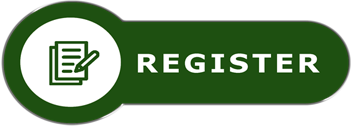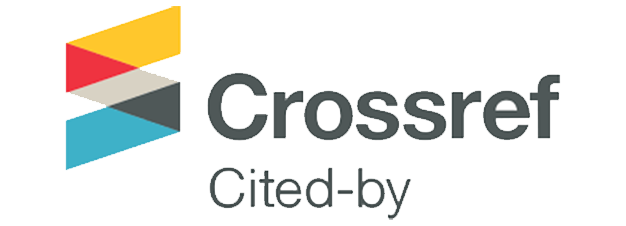Publisher:
Author Guidelines
These instructions give you guidelines for preparing papers for Journal which is published by Talenta Publisher, Universitas Sumatera Utara. Use this document as a template if you are using Microsoft Word 6.0 or later. Otherwise, use this document as an instruction set. Instructions about the final paper and figure submissions in this document are for Journal which is published by Talenta Publisher, Universitas Sumatera Utara. Please use this document as a template to prepare your manuscript for Journal of Environmental and Development Studies Submission
1. Manuscript Preparation
Manuscript in MS Word or PDF format (generated from MS Word) must be submitted to the Journal of Environmental and Development Studies (JEDS) through the Online Submission System by accessing the JEDS portal (https://talenta.usu.ac.id/jeds).
The length of manuscript is expected not to exceed 25 printed pages (1.5 line spacing) including abstract, figures, tables and references. The abstract must describes the significant points of manuscript containing aims of the paper, methods, result, and conclusion, within 100-200 words.
The authors should provide 5-10 keywords of phrases that characterizes the manuscript. The manuscript is written in English, Indonesia and SI system (Systme International d'Unit, often referred as "International Units") for measurements and units. The keywords are written after the abstract, where the manuscript consists of two abstract section, which are conveyed in English and Indonesian language.
The manuscript as the section body is written with Times New Roman font size 11 pt with 1.0 (one and half) line spacing between lines, 12 pt spacing among paragraphs, 12 pt spacing for the next heading, and on A4 paper (210 mm x 297 mm) with the upper margin of 2 cm, lower margin 2 cm, left and right 2 and 2 cm.
The references should be in APA style, which dictates that authors are named with their last name followed by their initials; the publication year goes between parentheses, followed by a period. The article's title is in sentence-case, meaning only the first word and proper nouns in the title are capitalized. The periodical title is run in the title case and is followed by the volume number, which, with the title, is also italicized. If a DOI has been assigned to the article you are using, you should include this after the page numbers for the article. If no DOI has been assigned and you are accessing the periodical online, use the URL of the website from which you are retrieving the periodical.
2. Start your manuscript
A. The Manuscript Title
The title of the article should be brief and clear as well as informative. It represents the contents of the research article which will be discussed, where it does not contain any uncommon abbreviation. It should not exceed 12 words in English, in 18pt-sized font, with the bold selection, Times New Roman, and capitalize each word of the title.
B. How to Write the Name and Author's Affiliation
The author name should be written without an academic degree. If the author name consists of at least two words, the last name should not be shorted (to avoid miss citation). If there is more than one author, the author names should be written separately by a comma (,). If the author names are only one word, it should be written as it is. The name of author should be written in 13.5pt-sized font, with the bold and italic selection as well as the left text format. The style of the author's name has been provided in MS Word Style (J.Author).
The author's affiliation should be written by providing the name of the department, faculty and university. It is written by 10pt-sized font and italic selection. The address written in the footer of the first page is the address of the author's affiliation by providing the street address, the postal code, the province, the city, and the country.
3. Manuscript Content
A. Abstract and Keywords
An abstract should stand alone, which means that no citation in the abstract. The abstract is like an advertisement that should tell the prospective reader what you did and highlight the key findings. Avoid using technical jargon and uncommon abbreviations. You must be accurate, brief, clear, and specific. Use words that reflect the precise meaning. The abstract should be precise and honest. Use 10pt-sized Times New Roman for the abstract body with single spacing and 10pt spacing for the next heading. The left indent is 2 cm and the right indent is 0 cm. Please follow word limitations (150 - 200 words).
Keywords are the labels of your manuscript and critical to correct indexing and searching. Therefore the keywords should represent the content and highlight your article. Use only those abbreviations that are firmly established in the field. Each keyword is written in 10pt-sized font and written alphabetically in 5-10 words and separated by a semicolon (;).
B. Introduction
Before the objective, authors should provide an adequate background, and very short literature review (state of the art) in order to record the existing solutions/method, to show which is the best of previous research, to show the main limitation of the previous research, to show what do you hope to achieve (to solve the limitation), and to show the scientific merit or novelties of the paper. Avoid a detailed literature review (state of the art) or a summary of the results. Do not describe literature review (state of the art) as author by author, but should be presented as the group per method or topic reviewed which refers to some literature. Then, authors should state the objectives of the work at the end of introduction section.
Example of novelty statement or the gap analysis statement at the end of Introduction section (after state of the art of previous research survey):........ (short summary of background)....... A few researchers focused on ....... There have been limited studies concerned on ........ Therefore, this research intends to ................. The objectives of this research are ..........
C. Research Method
The research method describes the stages of research/development undertaken to achieve the objectives/outputs of research. Each stage is briefly described (eg each step in a paragraph). Also inform the materials/platforms used in the study, including the subjects/materials, the tools/software used, the design or experiment used, the sampling technique, the test plan (the variable to be measured and the data retrieval technique), analysis and statistical model used. Provide enough detail to allow the work to be reproduced. The published method should be indicated by reference: only relevant modifications should be explained. Do not repeat details of existing methods, just refer it from the literature.
D. Results and Discussion
This part consists of the research results and how they are discussed clearly. The results obtained from the research have to be supported by sufficient data. The research results and the discovery must be the answers or the research hypothesis stated previously in the introduction part. Please highlight differences between your results or findings and the previous publications by other researchers. The discussion should explore the significance of the results of the work, not repeat them.
The following components should be covered in discussion: How do your results relate to the original question or objectives outlined in the Introduction section (what/how)? Do you provide interpretation scientifically for each of your results or findings presented (why)? Are your results consistent with what other investigators have reported (what else)? Or are there any differences?
E. Conclusion and Future Research
The conclusions will be the answers of the hypothesis, the research purposes and the research discoveries. Tells how your work advances the field from the present state of knowledge. Without clear Conclusions, reviewers and readers will find it difficult to judge the work, and whether or not it merits publication in the journal. Do not repeat the Abstract, or just list experimental results. You should also suggest future experiments and/or point out those that are underway.
F. Acknowledgments (Optional)
Recognize those who helped in the research, especially funding supporter of your research. Include individuals who have assisted you in your study: Advisors, Financial supporters, or may another supporter, i.e. Proofreaders, Typists, and Suppliers, who may have given materials. Do not acknowledge one of the authors' names.
G. References
All references referred to in the article text must be listed in the References section. The references shall contain at least 10 (ten) references from 80% of primary sources (scientific journals, conference proceedings, research reference books) which are published within 10 (ten) year.
APA (American Psychological Association; 6th Ed., 2009) reference style is required. Citations in the text should specify the source covering the last name of the author, year of publication, and the page number. Please ensure that every reference cited in the text is also present in the reference list (and vice versa). Avoid citation in the abstract. Unpublished results and personal communications should not be in the reference list. Citation of a reference as 'in press' implies that the item has been accepted for publication. The references should be arranged first alphabetically and then further sorted chronologically if necessary, and arranged according to the following: (i) Last name of the author followed by a comma, (ii) Fist name and second name followed by a period, (iii) Year of publication in the parenthesis followed by a period, (iv) Title of the book typed in italic and followed by a period, (v) Place of publication followed by a colon, and (vi) Name of the publisher followed by a period.
To find out how to arrange your references in APA style format, please see the following link
Example:
Books:
Bickman, Edward. (2010). Research methodology. New York: Macmillan Inc.
Mitchell, J. A., Thomson, M., & Coyne, R.P. (2017). A guide to citation. London, England: My Publisher.
Websites:
Mitchell, J. A., Thomson, M., & Coyne, R.P. (2017). A guide to citation. Retrieved from https://www.mendeley.com/reference-management/reference-manager
Journals :
Mitchell, J. A. (2017). Citation: Why is it so important. Mendeley Journal, 67(2), 81-95. Retrieved from https://www.mendeley.com/reference- management/reference-manager













